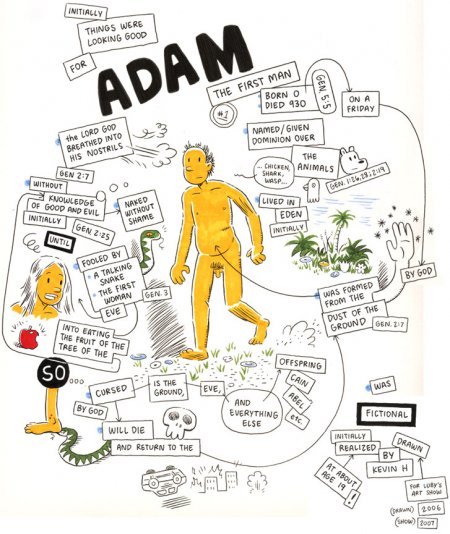There was this job I had where I was working at a place called XPLANE, which was an illustration company that did these visual explanation things, and a lot of times that amounted to these diagrammatic/comics illustrations. That really got me interested in diagrams. And after thinking for a while about diagrams, the stories that I did while I worked there have a lot of diagrams in them, and that carried on through. I started collecting old science textbooks and so forth that had these nice illustrated diagrams. It made me realize that since I was in high school and Understanding Comics came out, I’ve always thought about the comics form. And something I started realizing recently is that we talk about comics being a mixture of image and text, but it really seems to me that a part of the way comics works is in this sort of diagrammatic space. You have a pictorial space, which follows certain pictorial norms, and then you have the text part of comics, which follows the syntactical structure of text and language. What comics does is it has this particular way of diagramming those things together using the panel unit and the word balloon as symbols for certain things. I really realized that that was the part of comics that appealed to me the most. When I look at other cartoonists, I think that they’re real pictorial cartoonists. They’re really interested in the image part of comics. And there are other cartoonists who are really interested in stories and the subjects we associate with literary storytelling like character, plot and so on. I realized the thing that interested me in comics is the way all of that stuff is diagrammed on the page and the way that you read it.”
– Kevin Huizenga, interview
Links:
